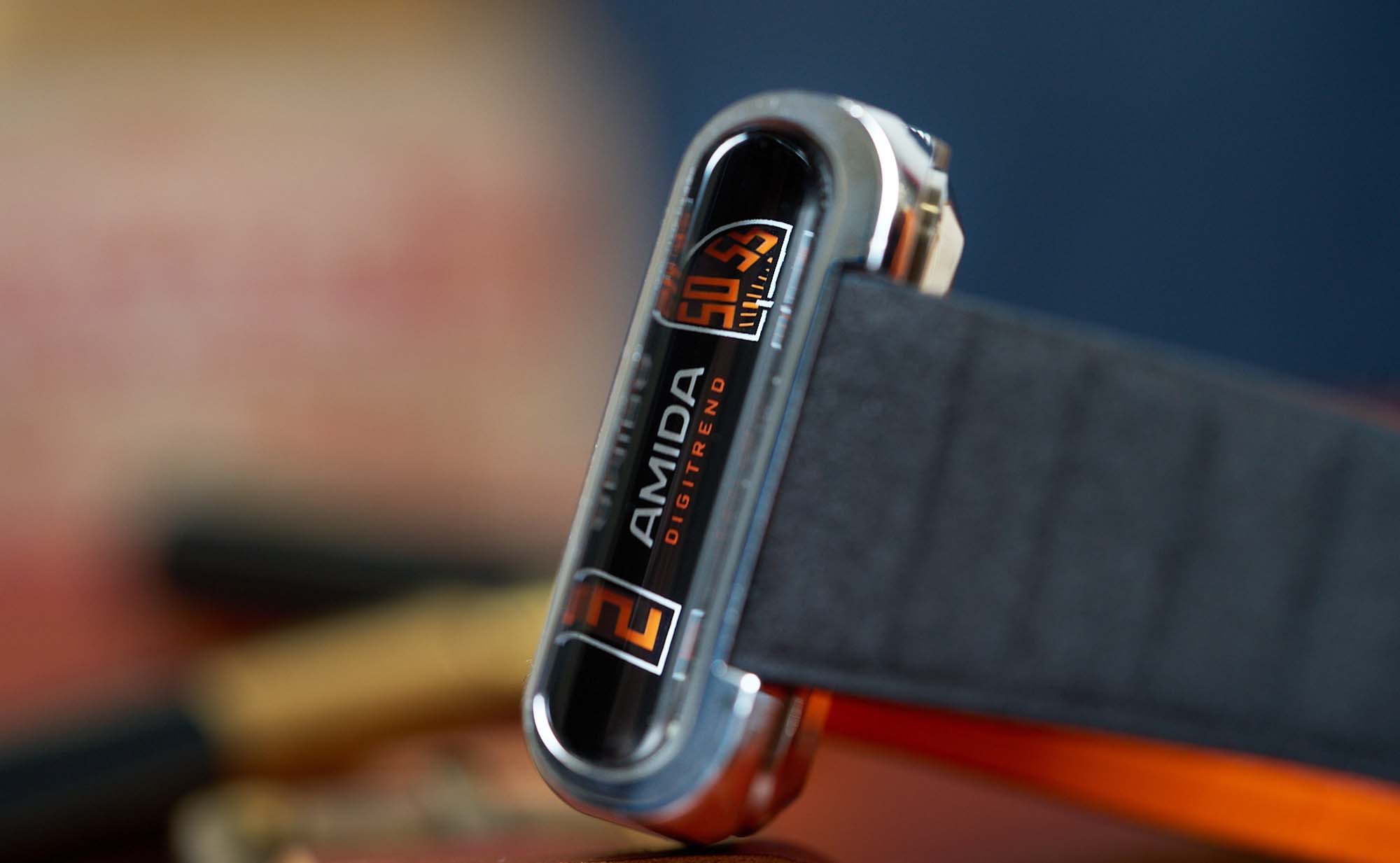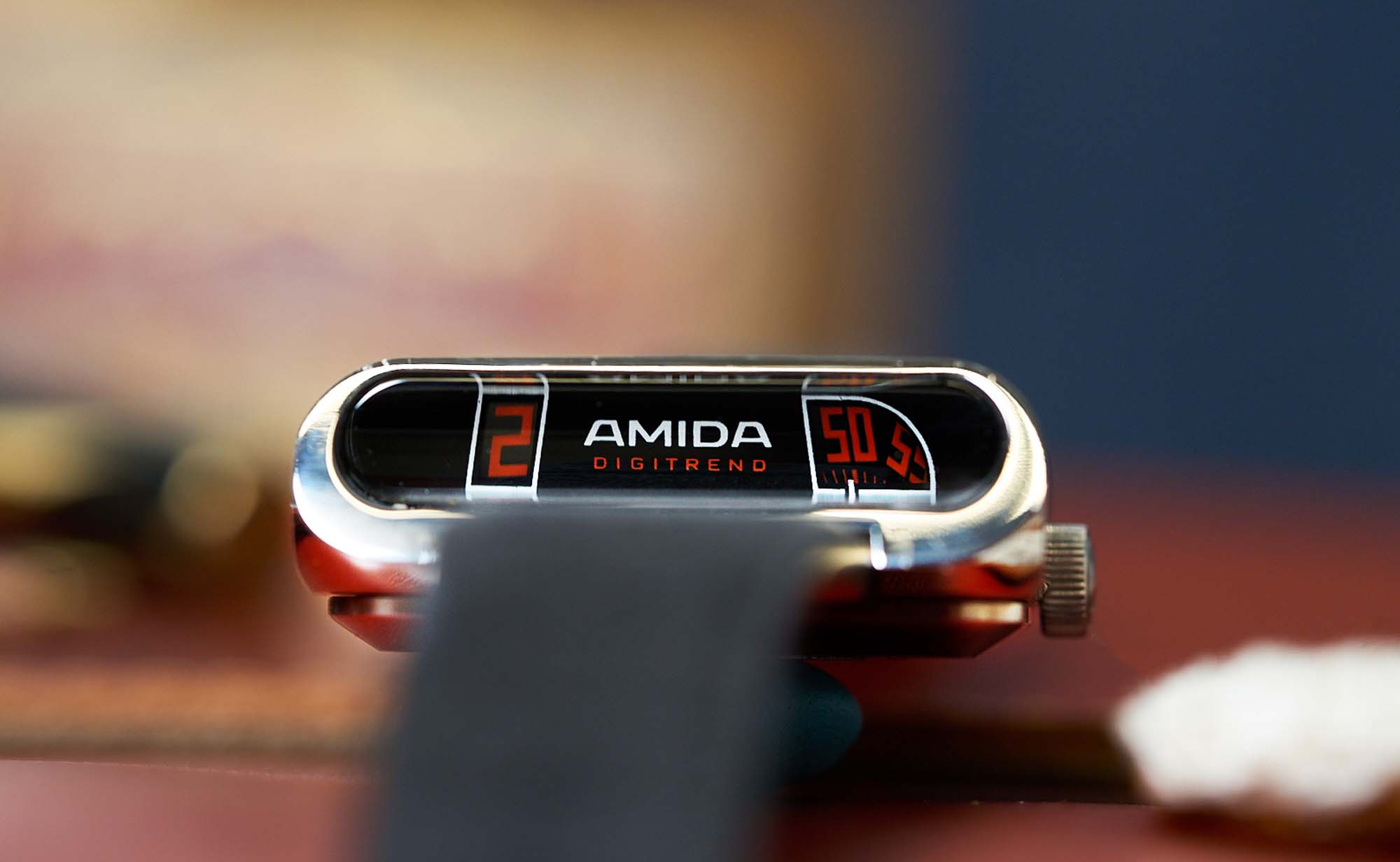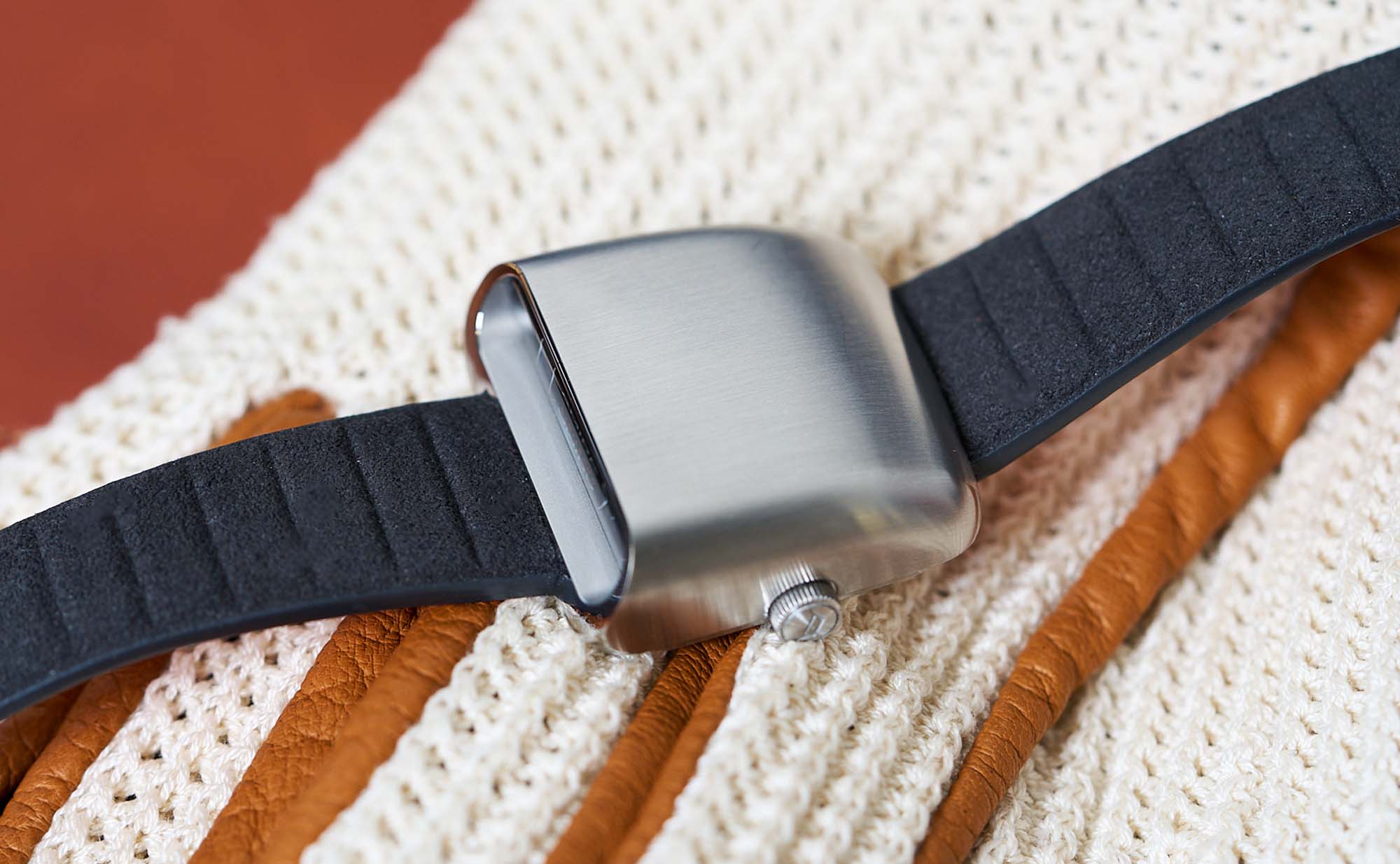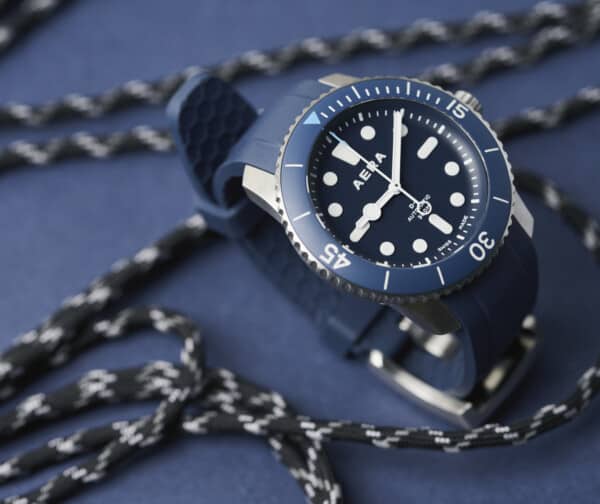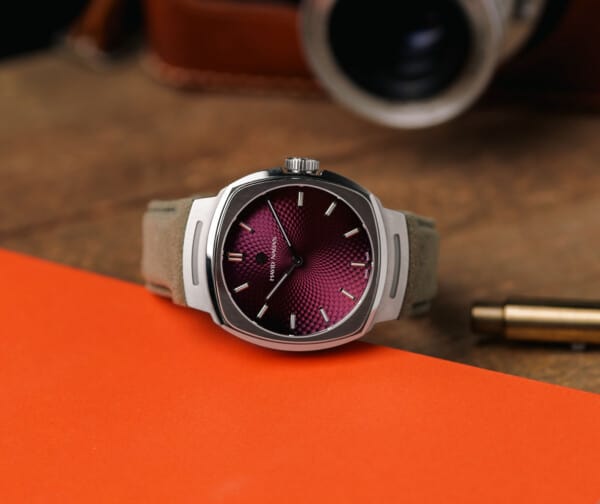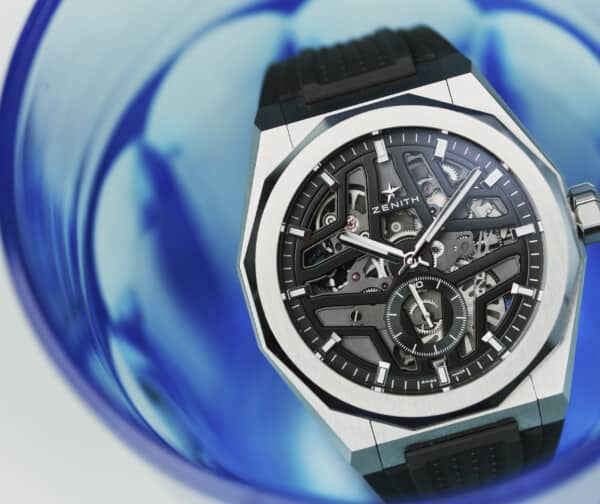If you missed our initial coverage of the Digitrend, here’s a brief primer on what we’re dealing with. The Digitrend has what’s come to be known as a “driver’s watch” display, with the time viewed through an aperture on what we’d normally think of as the “bottom” of the case. The idea here is that, with a hand on the steering wheel, the time display will be more easily viewable than in a watch with a dial where the dial is, you know, supposed to be.
In all other situations, checking the time requires an extra turn of the wrist that you frankly become accustomed to very quickly. Legibility is good given the narrow aperture. The total surface area used to display the time here is significantly less than what you’d experience on a traditional watch, so it’s a fairly major accomplishment that Amida is able to come up with a solution that doesn’t put an undue sacrifice on readability.
![]()
Time is read digitally, via a pair of rotating discs, one for hours and one for minutes, that lay flat and in line with the movement. The time readout from the discs is effectively projected forward by a prism, reflecting the current time into the display at the bottom of the case. It’s a simple and low tech solution to display the time, and one of my favorite things about the watch is that the ingenuity present here hasn’t lost any of its charm in the last 50 years.
The movement is a Soprod Newton P092, with a jumping hour module added that is Amida’s own creation. In the realm of affordable jump hours that kind of look like spaceships, the easy comparison here is to the debut release from SpaceOne. That watch, with a time display in a more traditional place but within a case that’s anything but, might be a tad easier to read at the end of the day, but both are successful in developing interesting ways to execute on the uncommon jump hour complication. It’s the kind of thing that you don’t really think would be quite as appealing as it is until you start actually interacting with the movement.
![]()
The other thing I love about the Digitrend is the ergonomic stainless steel case. The measurements, by the numbers, are a little deceiving. It’s about 39mm x 39mm, and at its thickest point the case measures nearly 16mm tall. But there’s a pronounced slope as the case angles down, where it measures just 6mm tall at the narrowest point. The result is something that’s actually rather sleek on the wrist and very easy to wear. My sample included an Alcantara strap that matched the vibe of the watch and was quite comfortable. It’s also available on a matching steel bracelet.
![]()
Just about every individual aspect of this watch is appealing. It’s a somewhat obscure retro throwback, it has a genuinely unusual display, an inventive and clever movement, and it can hold court with other creative, affordable indie releases that challenge what a “micro-brand” really is in 2024. But I keep coming back to the wrist shot. This watch simply doesn’t photograph like any other watch on the market, save the very few watches with similar “driver” style displays, all similarly niche in their appeal. I wonder how much traction a watch like the Digitrend can get in the current watch climate where social media remains incredibly important to spreading the word. This is a watch that you really have to wear on your wrist (for a while) to fully understand.
![]()
But that’s why we’re here. It seems to me that watches like the Amida Digitrend are the watches our website exists to champion. Unusual watches that can’t be summarized in a quick-hitting Instagram caption, or require a base level of knowledge to really wrap your arms around. As we’ve pointed out many times in recent months, there’s never been a more exciting time to be interested in off-beat, design-forward, affordable watches, and the Amida Digitrend is a great example of what’s out there for an adventurous watch lover.
![]()
With a retail price CHF 2,900, some in the community are grumbling that it’s overpriced, particularly when you can find original vintage examples for under $1,000. The new one, of course, actually has a more complicated movement design that Amida created on their own, which is surely a contributing factor to the final cost. But I take the point of view of the collector CB, who Griffin Bartsch recently interviewed, in that buying into a brand like this is a form of patronage. I’d love to see what a modern incarnation of the Amida brand is able to accomplish in a third or fourth generation product, and in order for them to get to that point, they’ve got to get past the first gen watch. Imagining what the future holds for Amida, and other brands like them, is a big part of why the watch industry is so fun and full of excitement right now, and I hope they’ll continue to have the opportunity to surprise us for years to come. Amida









 Featured Videos
Featured Videos





